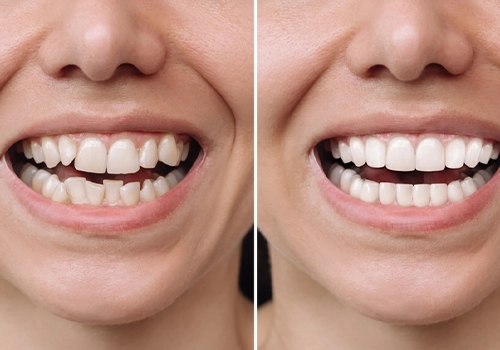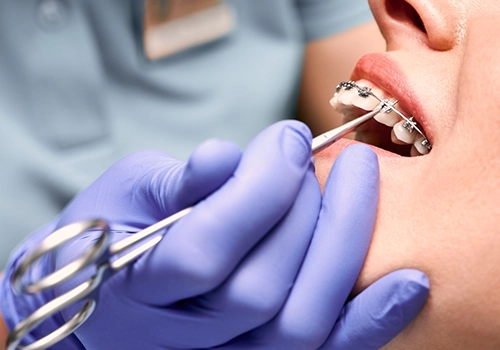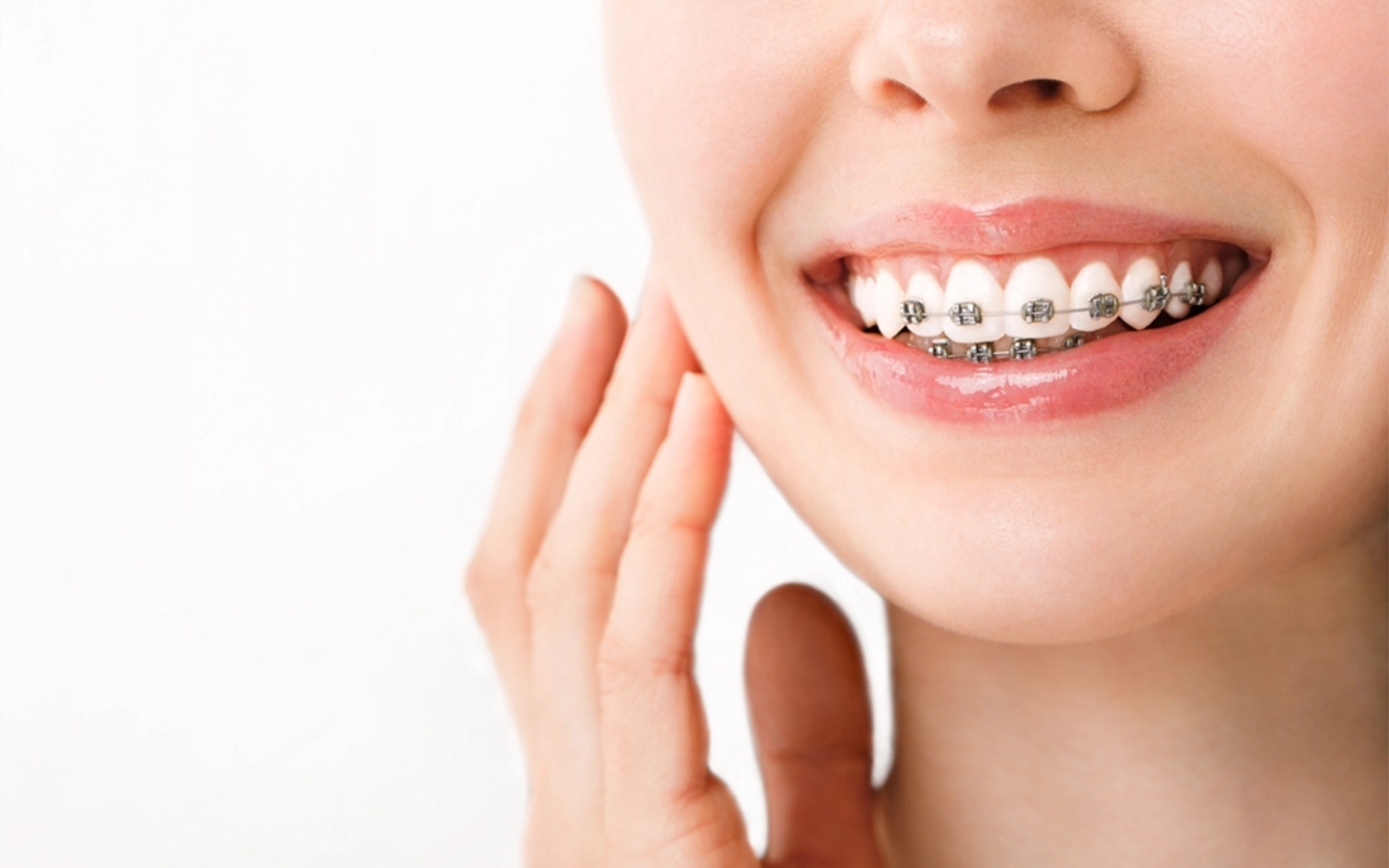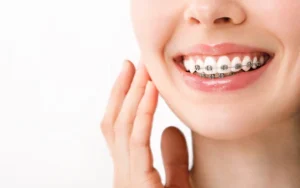Orthodontics
Orthodontics, the art of aligning teeth for a confident smile, is more than a cosmetic fix—it’s a journey to improved oral health. At its core, Orthodontics is the specialized field dedicated to straightening teeth and correcting bites. Embracing Orthodontic treatment is not just about achieving a beautiful smile; it’s an investment in a healthier you.
Through the ages, Orthodontics has transformed, offering advanced solutions for misalignment’s. Now, with Dr. Maadico, finding the right professional for your Orthodontic journey in Iran is easier than ever. Let Dr. Maadico’s Medical department guide you to a skilled dentist who’ll make your smile shine.
What is Orthodontics?
Orthodontics is like the architect of your smile, working to enhance both the appearance and function of your teeth. Picture braces as the handy tools in this process, diligently guiding your teeth into their optimal positions.
Orthodontics isn’t just about aesthetics; it’s a dental specialty that focuses on the alignment of teeth and jaws. Braces use wires and brackets to gently coax your teeth into a beautifully harmonized arrangement.
Common Orthodontic Issues
Teeth alignment often involves addressing common issues that can affect both the aesthetics and functionality of your smile. Let’s delve deeper into these challenges:
- Malocclusion: Imagine your upper and lower teeth as puzzle pieces that should fit snugly together. Malocclusion disrupts this perfect union, leading to a misaligned bite. Orthodontics steps in to assess the puzzle, reconfiguring the pieces with methods like braces to restore the harmony of your bite.
- Crowding: When there’s insufficient room, your teeth may start to push and shove, resulting in crowding. Orthodontic solutions, such as braces create ample space for each tooth to stand in its designated spot.
- Overbite, Under bite, and Cross bite: Your upper and lower teeth should ideally engage in a well-choreographed routine, but sometimes, the routine gets mixed up. An overbite occurs when the upper teeth overlap the lower ones, while an under bite is the opposite.
A cross bite happens when the upper and lower teeth don’t meet correctly. Orthodontics acts as the director, guiding each tooth to perform its role in the dental ensemble, ensuring a symphony of proper alignment.
Causes of Orthodontic Problems
Ever wondered why some smiles need a little extra attention? Let’s explore the reasons behind orthodontic challenges:
- Genetic Factors: Just like inheriting eye color or hair texture, your genes play a role in your dental destiny. If Mom or Dad needed orthodontic care, you might too. Genetic factors can influence the size and shape of your jaw, impacting how your teeth align.
- Childhood Habits (Thumb-sucking, Mouth Breathing): Some childhood habits can subtly shape your smile. Thumb-sucking or persistent mouth breathing might seem harmless, but they can affect the development of teeth and jaw. The good news? Early detection and orthodontic care can often nip these issues in the bud.
- Jaw Injuries: Accidents happen, and sometimes they involve our jaws. Whether it’s a sports injury or a tumble, trauma to the jaw can disrupt the delicate balance of teeth alignment. Orthodontic care steps in to assess and correct the aftermath, ensuring your smile remains resilient.

Orthodontic Treatments
Here are the most common Orthodontic Treatments:
1. Traditional Braces
When it comes to bite correction and aligning your smile, traditional braces are the seasoned superheroes of orthodontics. Let’s take a closer look:
- Components and Structure: Traditional braces consist of small brackets attached to each tooth and connected by wires. These components work together as a dynamic team to guide your teeth into their proper places.
- How They Work: Think of braces as gentle coaches for your teeth. The wires apply controlled pressure to the brackets, encouraging your teeth to gradually shift. This process allows for bite correction and aligns your teeth over time, resulting in a beautifully harmonized smile.
2. Invisalign and Other Clear Aligners
Unlike the classic metal braces, Invisalign and other clear aligners take a subtler approach to straightening your teeth. These transparent, custom-fitted trays are virtually invisible, making them a popular choice for those seeking a more discreet orthodontic solution.
Instead of wires and brackets, clear aligners use a series of removable trays that gradually shift your teeth into place.
Pros
- Invisibility: Clear aligners are barely noticeable, offering a more aesthetically pleasing option.
- Removability: You can take them off for eating, brushing, and special occasions.
- Comfort: No wires or brackets mean less irritation to your cheeks and gums.
Cons
- Compliance is Key: For effective results, it’s crucial to wear clear aligners as recommended.
- Limited for Complex Cases: While great for many, clear aligners may not be suitable for severe orthodontic issues.
Choosing between Invisalign or traditional braces depends on your specific needs and preferences. Both options work toward the same goal — a beautifully aligned smile.
3. Other Orthodontic Devices
- Retainers: Retainers are like the steadfast guardians of your smile’s alignment. These devices come in various forms, and while some are removable, consistency in wearing them is crucial. Think of them as the final touch, ensuring your teeth stay beautifully aligned for the long run.

- Headgear: Headgear is a valuable ally in orthodontic care. It’s a device that works in conjunction with braces, applying gentle pressure to guide the jaw and correct bite issues. Despite its appearance, many find headgear more comfortable than expected. It’s a targeted solution for specific cases, aiding in the comprehensive alignment of your smile.
Retainers and headgear function as personalized aides, adapting their support to individual orthodontic requirements, ensuring the durability and stability of a newly aligned smile, thereby concluding the journey towards a confident and harmonious grin.
The Orthodontic Procedure
Embarking on your orthodontic journey involves several essential stages:
-
Initial Evaluation and Diagnosis:
Commencing with a friendly consultation, your orthodontic professional examines your current teeth alignment, checks for any bite irregularities, and assesses overall oral health. This pain-free process may incorporate X-rays or impressions for a comprehensive view of your smile.
-
Tailored Treatment Planning:
Armed with a deep understanding of your smile, the orthodontist devises a personalized plan, considering options such as braces, clear aligners, or other devices.
-
Interactive Discussion and Q&A:
Engaging in a two-way dialogue, your orthodontist values your thoughts, concerns, and smile aspirations. The more insights they gain about your expectations, the better they can customize the treatment to suit your unique needs.
-
Questions to Ask During the Initial Consultation
- Treatment Options: Inquire about the available treatment options and which might be best suited for your specific needs.
- Treatment Duration: Understand the expected timeline for your orthodontic treatment and any factors that might affect it.
- Cost and Payment Plans: Clarify the overall cost of treatment, payment options, and whether the orthodontic practice accepts insurance.

- Maintenance and Aftercare: Discuss the post-treatment phase, including retainer use and any necessary follow-up appointments.
- Potential Challenges: Address any potential challenges or discomforts during the treatment process and how they can be managed
Treatment Phases
1. Installation of Braces or Aligners
This pivotal phase marks the initiation of orthodontic intervention. The installation of braces involves the meticulous attachment of brackets to each tooth, interconnected by wires. This carefully crafted framework exerts controlled pressure, guiding teeth into their optimal positions. Conversely, the discreet application of clear aligners signals the commencement of a subtle, iterative process designed for inconspicuous teeth alignment. Both methods lay the foundation for the subsequent phases of orthodontic treatment.
2. Regular Adjustments and Check-ups
To maintain the trajectory of orthodontic care, regular adjustments and check-ups are integral. These systematic sessions serve as checkpoints, enabling professionals to assess progress, make necessary modifications, and ensure alignment precision.
Duration of Treatment
The timeline of orthodontic treatment is influenced by various factors, each contributing to the overall duration. The complexity of the orthodontic issue plays a pivotal role; more intricate cases often necessitate extended treatment periods.
Additionally, the type of treatment opted for, be it traditional braces or clear aligners, can impact how swiftly teeth alignment progresses. Individual patient response to the orthodontic intervention and the extent of required adjustments further contribute to the variability in treatment duration.
A significant determinant in the success and efficiency of orthodontic treatment lies in patient compliance. Adhering to prescribed guidelines, such as wearing aligners consistently, maintaining proper oral hygiene, and attending scheduled appointments, greatly influences the treatment’s pace.
The commitment and cooperation of the patient in following the orthodontic plan contribute substantially to achieving the desired results within the anticipated time frame.
Benefits of Orthodontic Treatment
-
Improved Aesthetics:
- Corrects misalignment s and enhances tooth symmetry.
- Methods like braces or aligners transform your smile into a harmonious expression of dental aesthetics.

-
Enhanced Oral Health:
- Prevents oral health issues such as gum disease and cavities.
- Straightened teeth are easier to clean, reducing the risk of plaque buildup and ensuring optimal gum health.
- Orthodontics creates an environment conducive to maintaining excellent oral hygiene
Functional Benefits:
- Extends beyond cosmetic enhancements to improve functionality.
- Aligned teeth facilitate proper speech patterns and pronunciation.
- Correcting bite irregularities enhances the efficiency of biting and chewing, promoting better digestion and overall oral function.
- The functional benefits of orthodontic intervention underscore its comprehensive impact on both aesthetics and oral well-being.
Orthodontics for Different Age Groups
-
Orthodontic Treatment for Children:
- Early intervention sets the stage for optimal oral health.
- Focuses on identifying and addressing developing dental issues.
- Guides jaw development during primary and mixed dentition stages, corrects bite irregularities and creates a solid foundation for a beautifully aligned and functional adult smile.
-
Adolescent Orthodontics:
- The common time for intervention, marked by permanent teeth eruption.
- Braces or clear aligners address misalignment s, overcrowding, and bite issues.
- Adolescents’ receptive nature and developing oral structures allow effective correction, contributing to a confident smile into adulthood.
-
Adult Orthodontics:
- Adult orthodontics has witnessed a surge in popularity, thanks to advancements like clear aligners and discreet braces options.
- Addresses both aesthetics and functional concerns, preventing oral health issues associated with misalignment s.
- Modern orthodontic techniques make it feasible for adults to achieve their desired smile, promoting confidence and overall well-being.

Bottom Line
Orthodontics transcends mere aesthetic enhancements; it is a fundamental aspect of comprehensive dental care. By addressing misalignment s, bite issues, and related concerns, orthodontic treatment contributes not only to an aesthetically pleasing smile but also to improved oral health and functionality.
get a free consultation with our specialists in Dr. Maadico’s Medical department. As you embark on or continue your orthodontic journey, envision the destination – a confident smile that reflects both aesthetic beauty and oral health
Get a Free Consultation
FAQs
- Why should I have my Orthodontic Procedure in Iran?
Iran boasts skilled orthodontic professionals, modern facilities, and cost-effective treatments. With a rich history and renowned expertise, it offers a compelling destination for quality orthodontic care.
- Is Orthodontic Treatment Dangerous for Pregnant Women?
Orthodontic treatments are generally safe during pregnancy. Consult with your orthodontist to ensure personalized care and discuss any concerns or precautions specific to your situation.
- How Long Does Orthodontic Treatment Usually Take?
The duration varies based on individual needs. On average, treatment lasts 18-24 months. Your orthodontist will provide a personalized timeline during the initial consultation.
- Are Clear Aligners as Effective as Traditional Braces?
Yes, clear aligners are effective for many orthodontic issues. They offer a discreet alternative to traditional braces, providing gradual teeth alignment with flexibility and comfort.
- Can Adults Benefit from Orthodontic Treatment?
Absolutely. Orthodontic treatments for adults are increasingly common. Modern options like clear aligners cater to diverse needs, offering effective solutions for achieving a confident and well-aligned smile.


